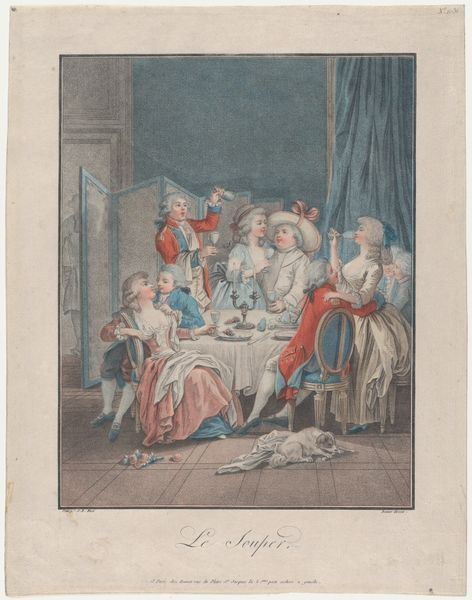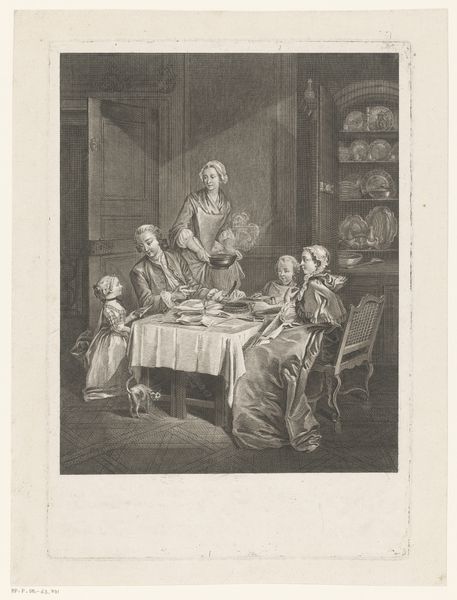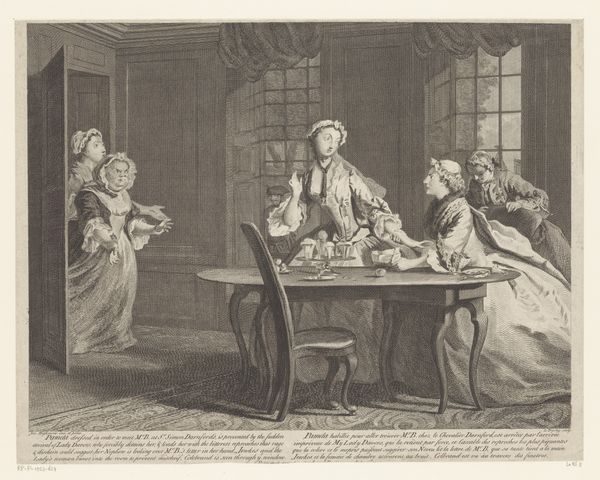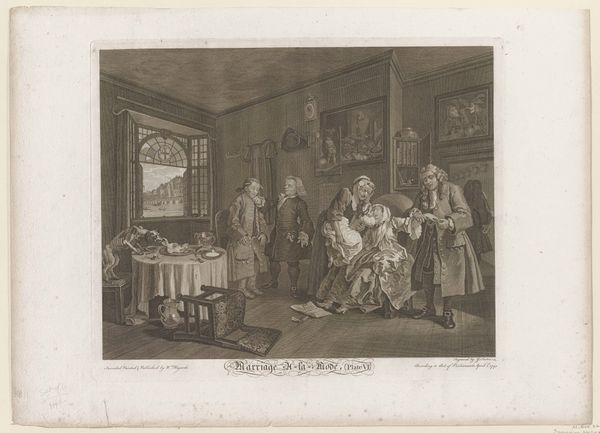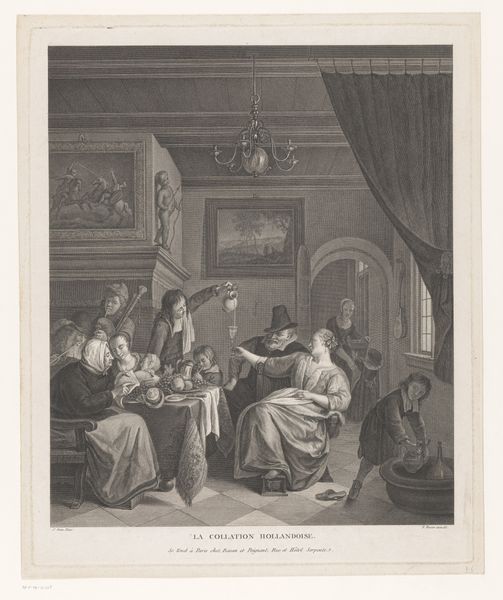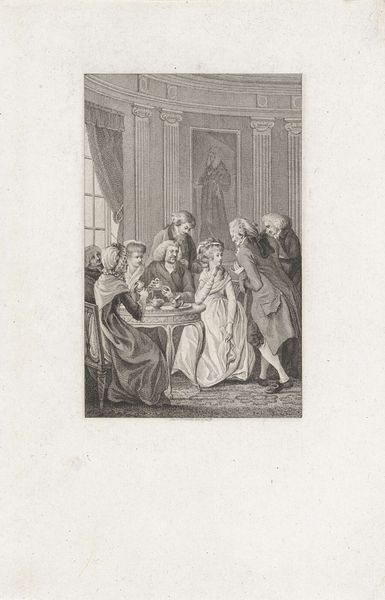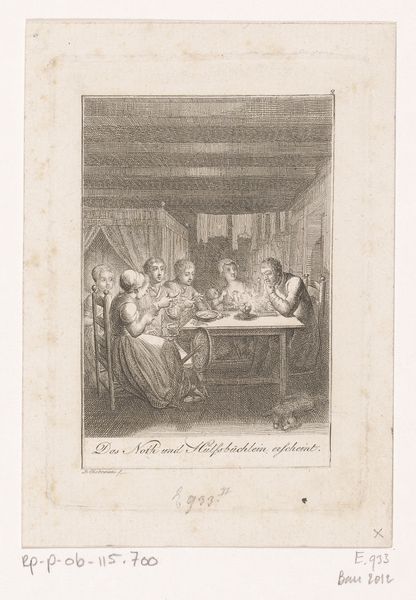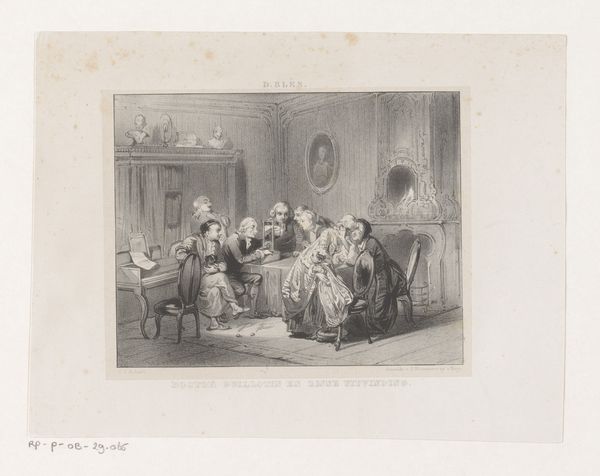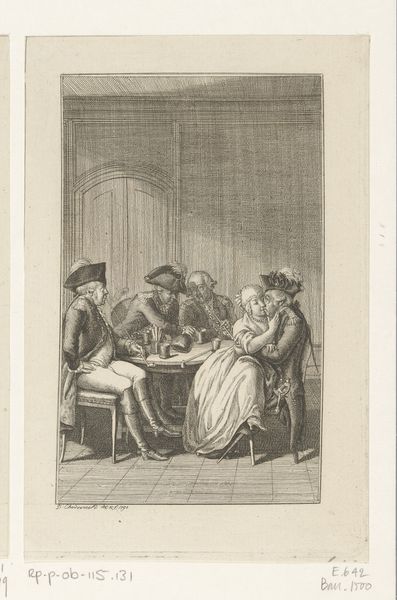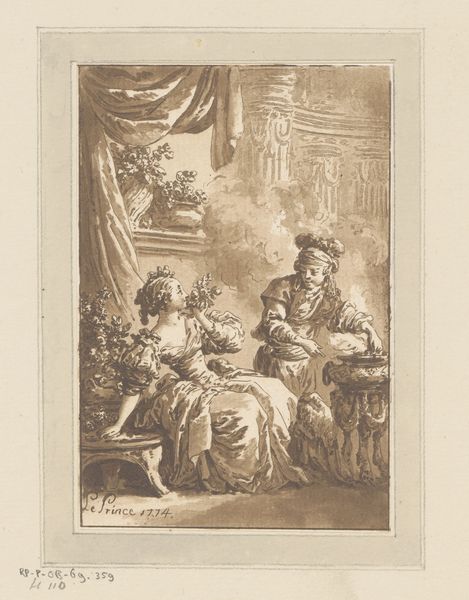
Dimensions: Sheet: 13 3/4 × 10 5/8 in. (35 × 27 cm) Plate: 13 9/16 × 10 1/2 in. (34.5 × 26.7 cm)
Copyright: Public Domain
Editor: This is "The Dinner," an etching and engraving by Louis Marin Bonnet from around 1787 to 1789. There's such a formality to this meal, but I wonder what's actually being communicated. How do you interpret this work, considering the period it was created in? Curator: Looking at "The Dinner," I see more than just a snapshot of an aristocratic family at table. I see a society teetering on the edge of revolution. Consider the context: Bonnet created this print right before the French Revolution. The Rococo style, with its delicate colors and focus on leisurely pursuits, masks underlying tensions. The lavishness on display feels… precarious, don’t you think? Editor: It's interesting you say "precarious". The abundance does feel a little… excessive. It almost feels staged, somehow? Curator: Precisely. And who benefits from this carefully constructed image of harmony and abundance? This image promotes the power of the dominant class, and normalizes the glaring inequalities within French society, with implications regarding access and entitlement to essential commodities such as food. We must consider the historical context and ask who this artwork was made *for*, and whose experiences it might intentionally erase or ignore. What kind of political statement does it convey by showing a scene of affluence like this one? Editor: It really flips my initial reading of the image, to view it not just as a pleasant scene, but also as a political tool of the upper class. Curator: Art is rarely created in a vacuum. By understanding the social forces at play during its creation, we can reveal these hidden layers and truly begin to understand the full scope of the artist's, and the patron's, intent. It’s a great case study to discuss visual art under the umbrella of representation theory. Editor: I never thought about this scene that way, it gave me a lot to reflect on regarding not only art creation but the whole concept of contextualisation. Curator: Agreed. Context provides an avenue into considering and questioning any dominant historical narratives.
Comments
No comments
Be the first to comment and join the conversation on the ultimate creative platform.
